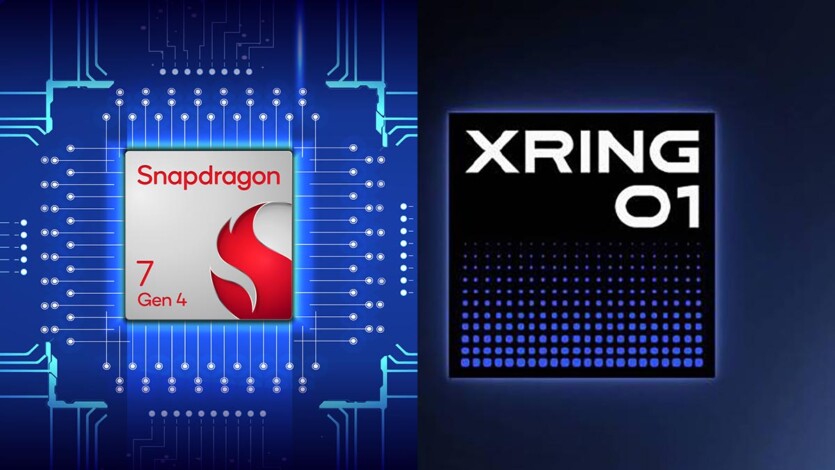
A few days ago, Qualcomm introduced Snapdragon 7 Gen 4 — is a mid-range mobile processor that delivers flagship capabilities. On the same day, Xiaomi announced XRING 01 processor for smartphones. These chips have already been tested in the popular Geekbench test package, which makes it possible to assess their performance level.
Qualcomm Snapdragon 7 Gen 4
The new Qualcomm Snapdragon 7 Gen 4 processor has arrived on the Geekbench platform along with the Honor DNN-AN00 smartphone. This is almost certainly an Honor 400 model, as the Honor 400 Pro is predicted to have a Snapdragon 8 Gen 3 chip. The tested smartphone has 15 GB of RAM and runs Android 15.
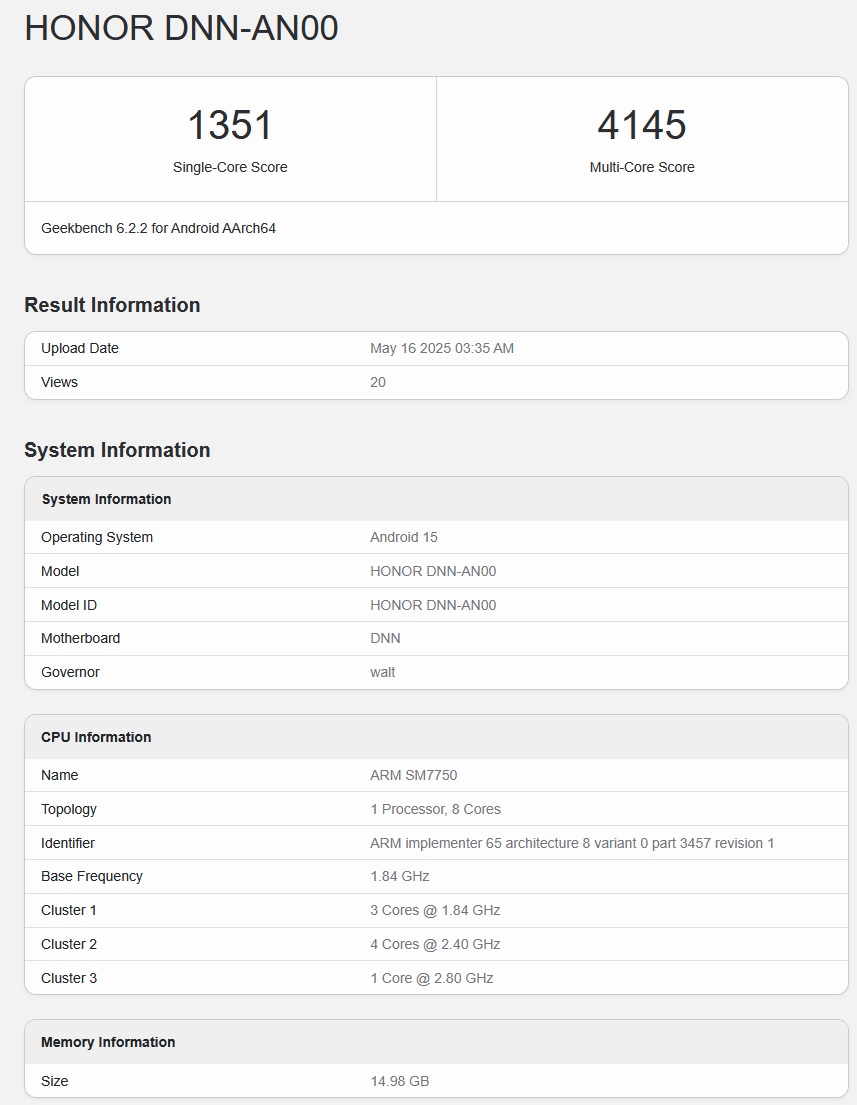
The first run in Geekbench showed that the Snapdragon 7 Gen 4 really outperforms its predecessor — Snapdragon 7 Gen 3. In the single-core test, the new product scored 1351 points, which is 18% more than the 7 Gen 3 (1147 points). But in the multi-core test, the performance increase is even more impressive — 4145 points versus 3129 in the previous version, i.e. 32% more. It should be remembered that the Honor 400 that was tested is only a pre-production model. With further software optimizations, the test results may improve even further.
Xiaomi XRING 01
The new Xiaomi XRING 01 scored an impressive 2709 points in single-core mode and 8125 — in multi-core mode in its first Geekbench test. This, by the way, is higher than the results of Snapdragon 8 Gen 3! True, the performance is still a little short of the newer Snapdragon 8s Gen 3 Elite. But for a debut in-house chip, this is already a serious claim. In addition, these are the first results – after optimizations, we can expect better results.
Later, another entry with the results of Xiaomi XRING 01 appeared in Geekbench, but with lower scores: 1860 in the single-core test and 7449 in the multi-core test. This is already the level between Snapdragon 8 Gen 2 and Gen 3, which may indicate either different firmware optimization or work on early prototypes.
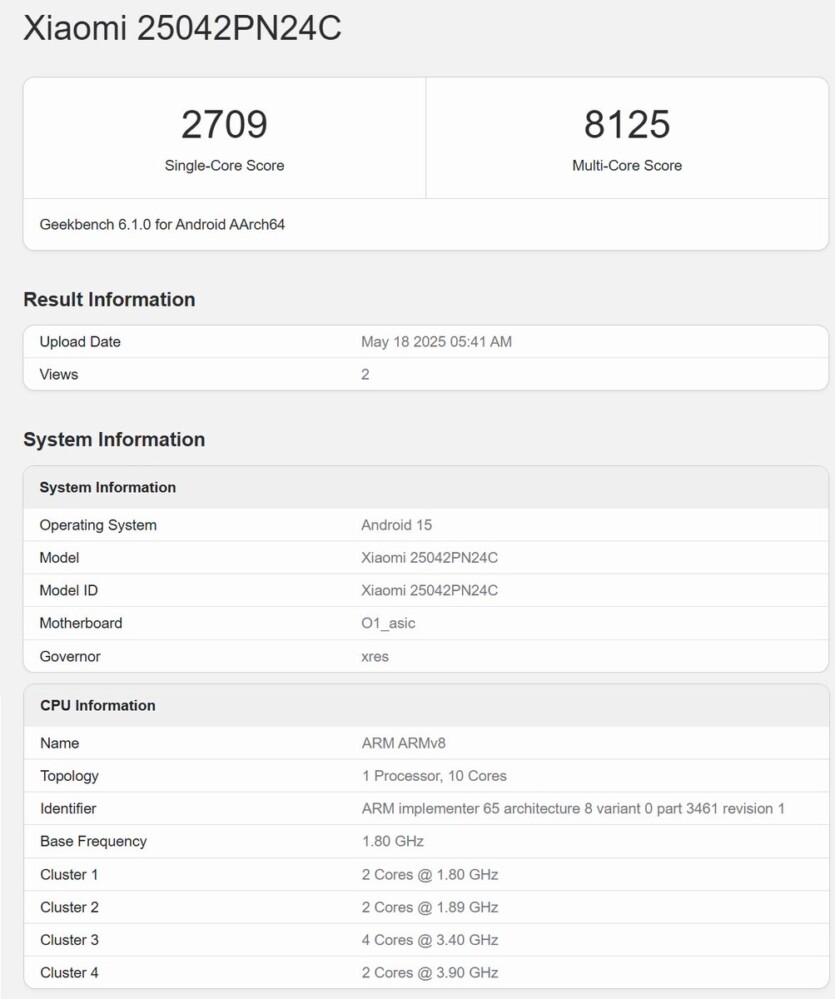
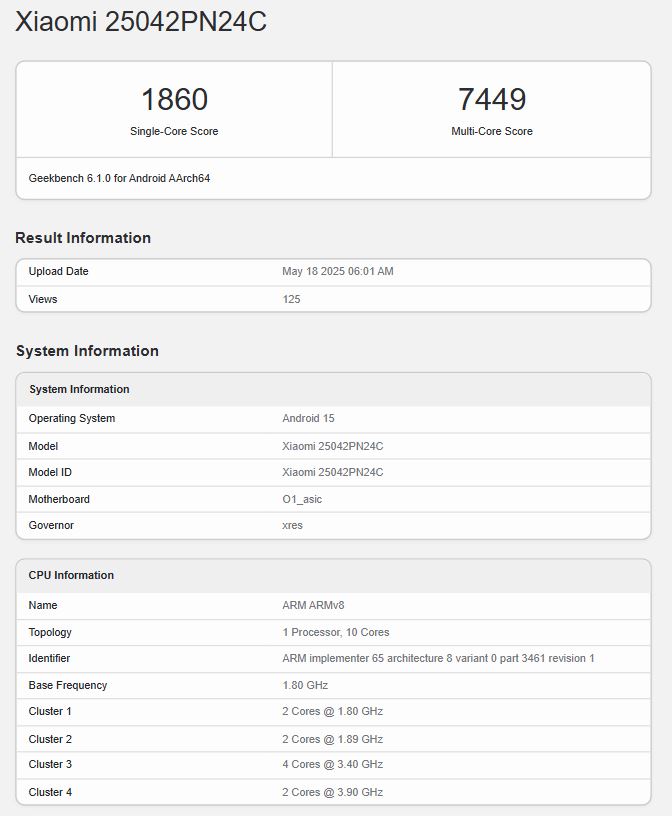
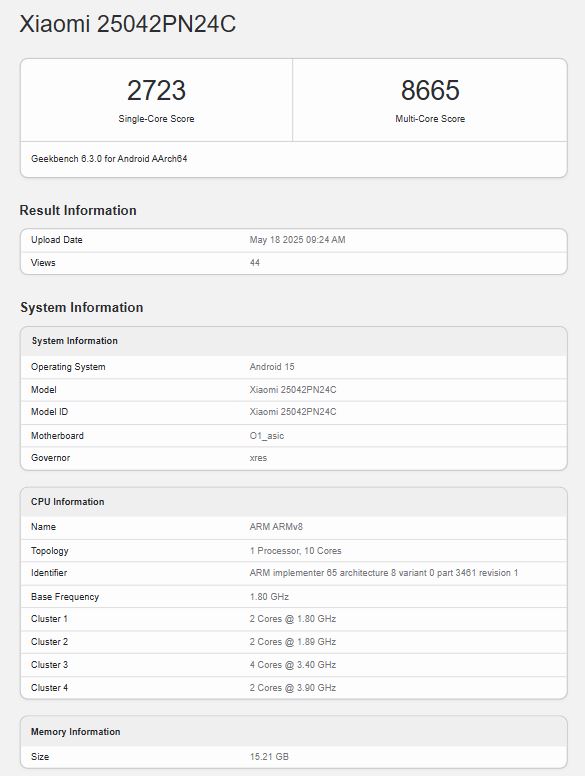
It is interesting that the Geekbench description indicates a rather atypical configuration of cores. XRING 01 has:
- 2 cores with a frequency of 1.80 GHz
- 2 cores with a frequency of 1.89 GHz
- 4 cores with a frequency of 3.4 GHz
- 2 cores with a frequency of 3.90 GHz
In total, there are 10 cores. There is speculation that the slowest cores are Cortex-A520, and the most powerful are the latest Cortex-X925, which have not yet been widely available. But everything will become clear only after the official presentation. In addition, it has been confirmed that the GPU in the chip is ARM Immortalis-G925 MC16, which promises powerful graphics, including for ray-tracing games.
In the tests, the processor was installed in a smartphone with 16 GB of RAM — probably Xiaomi 15S Pro, because this model was previously revealed with a similar code 25042PN24C in the internal Mi Code files. It has also already passed 3C certification with support for 90W wired charging.
Judging by previous tests, Xiaomi XRing O1 — is a very strong debut. The chip is well on par with the most productive Qualcomm mobile processors.
Source: notebookcheck 1, 2

Spelling error report
The following text will be sent to our editors: